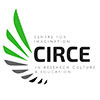by Kurtis Stangl, MEd student at SFU in Ed Leadership
Note: This blog is in response to the Episode 3 Cultivating Imagination podcast.
I have stood at the base of ancient and modern structures and often contemplated how form and function have been utilized to create spaces since humans first began to develop settlements and adopt more sedentary lifestyles. Architecture is one of humanity’s greatest connectors; it bridges the past, present, and future in how it embodies our beliefs and values, offering a tangible link to our cultural and historical roots. You can feel something stir in your bones when you behold wonders like that of Machu Picchu, built a long time ago, or walk the walls of the ancient city of York, taking in the same views that many others have over the course of thousands of years. You may also experience a sense of loss when you see the gentrification process begin in a neighborhood you used to visit, with scaffolding and construction equipment occupying nostalgic spaces. Those feelings prove that architecture is more than just a physical experience; it is deeply embedded in being human. Architecture can be used as a metaphor to explore how the fabrics of communities are interwoven, in how relationships are constructed, and perhaps most significantly, in how memory, identity, and discourse are formed.
At the end of the day, perhaps architecture isn’t only about constructing the tallest towers or biggest megastructures. It’s about imagining new structures into being…
Listening to John Seely Brown and Ann Pendleton-Jullian on Knitting Together Serendipitous Connections left me reflecting on this relationship between architecture, community, and the human experience. It also had me thinking about an experience I recently had as a graduate student. During one of our classes, we participated in an exercise that involved reviewing our university’s community of practice guidelines, which were written to outline the school’s fundamental principles for dialogue and learning. Our instructor tasked us with evaluating the pillars of this policy to assess their effectiveness in fostering respect, a sense of belonging, and collaborative interactions within our cohort, emphasizing the crucial role these elements play in our academic community. We collectively reviewed these principles in silence over the next few minutes until the time came to discuss them. My colleagues offered valuable insights and perspectives on how to best practice these guidelines or enact them moving forward. We then turned to another idea: within the architecture of our educational community, was anything missing? Was there a piece of this foundation that was missing that could potentially undermine impactful academic dialogue?
One of my colleagues made a suggestion that echoed John Seely Brown’s idea, as eloquently captured in Cultivating Imagination, about the importance of practicing generous and generative listening. While our handout on guiding practices did include a section on ‘approaching listening with respect’, I believe that listening generously and listening respectfully are two different things. Listening generously entails giving others the benefit of the doubt and making an active attempt to understand their point of view, their life experiences, and critically account for your own assumptions as you engage in constructive dialogue. Conversely, listening respectfully involves embodying courtesy, consideration, and reciprocity within interactions. While both can be considered crucial to the architecture of effective communication and building a strong community amongst learners, I consider generous listening to be essential within the sociocultural context we are currently in, and especially in navigating conversations around schools, whether public or private. Generous listening activates the imagination and opens possibilities for an authentic shift of perspective, allowing for a new kind of dialogue.

As information systems and social networks become increasingly intertwined within algorithms and big data, prioritizing empathetic listening has never been more important to the prevention of silo creation and the development of echo chambers. A path forward through the wicked social problems of coloniality, discrimination, and systemic oppression is not possible by drawing lines in the sand through the silencing or ostracization of individuals who approach such topics with a lack of knowledge or experience. Only those who agree to engage in difficult conversations with an open mind and a willingness to do the imaginative work of exploring various perspectives make the concept of a “safe space” possible. That includes connecting with those individuals who come from privilege and those who are marginalized, those who have benefited or suffered at the hands of colonial systems, and those who possess and traditionally have been dispossessed of power. It places humans at the center of conversations, emphasizing an understanding and mutual respect that too frequently becomes a casualty in broader discussions around social justice and equity. From this place, generative listening can be realized, and we can imagine a better future.
At the end of the day, perhaps architecture isn’t only about constructing the tallest towers or biggest megastructures. It’s about imagining new structures into being: building bridges and creating spaces for connection that can be both confrontational and conducive to holistic growth. My hope is that educational leaders will consider these possibilities and contemplate the potential of weaving generosity and generation into the form and function of academic spaces.
Hear more from our leaders in the Cultivating Imagination podcast series.


